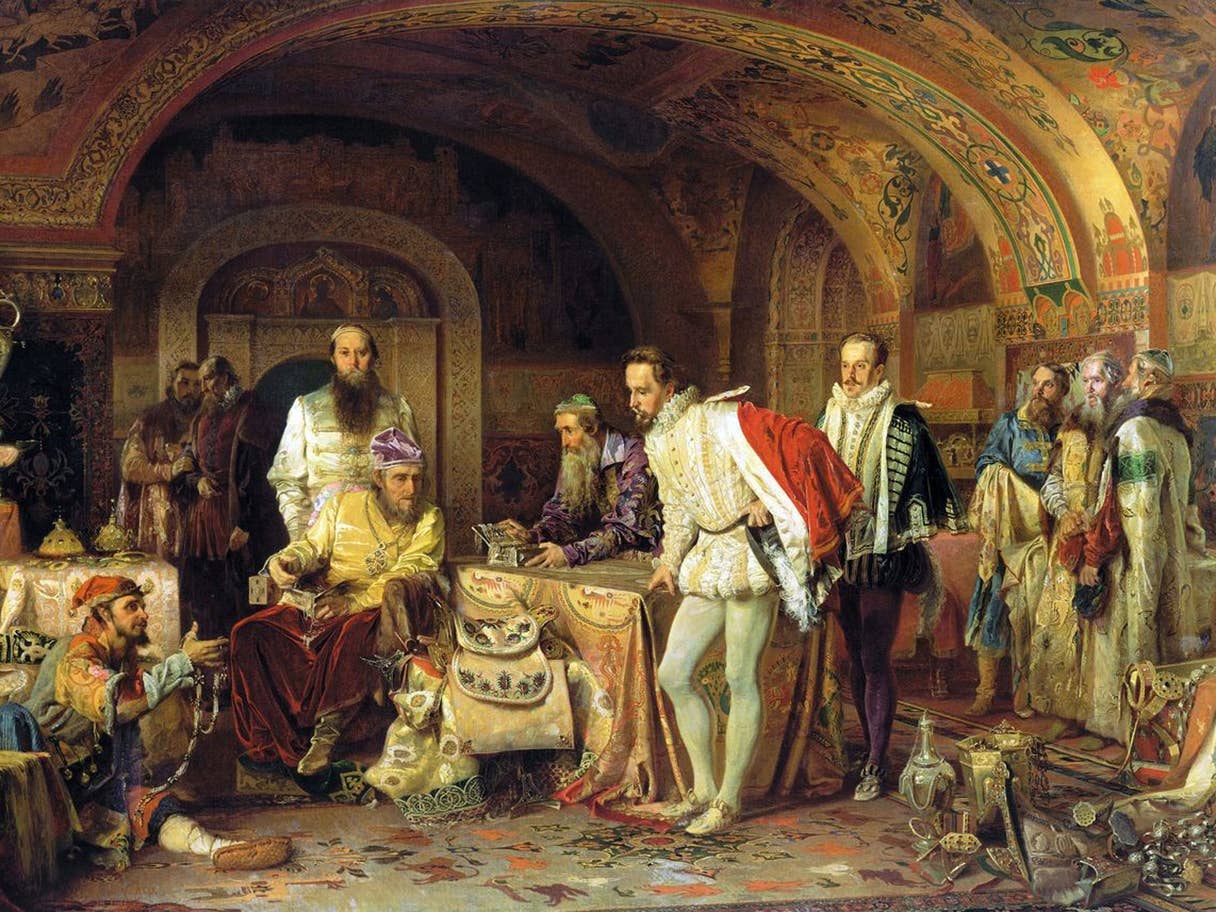 |
| An oil canvas by Alexander Litovchenko from 1875 of Ivan IV of Russia showing his treasures to the ambassador of Queen Elizabeth I of England |
We can get some ideas about what rulers aimed to do with illuminated correspondence if we examine a single letter: the second letter Elizabeth I of England sent to Ivan IV of Russia (Ivan the Terrible). Heavily damaged, as you can see from the image at the top of the page, it is highly decorated in colour (sadly I only have a black and white image). But some idea of how vivid English letters to Russia were can be gained from this image of one of Charles I’s letters.
Elizabeth’s letter was written in Latin. An English translation was published by Richard Hakluyt in the later sixteenth century in one of his volumes on the English ‘discoveries’ of the non-European world.[4] It was one of the most elaborately decorated letters sent by Elizabeth.[5]
Elizabeth’s letter complicates our task of understanding the role of royal correspondence because the two rulers did not share a common language.[6] French, Italian and Latin were widely used in European diplomacy in the sixteenth century. English, however, was not considered important enough to be mentioned in diplomatic handbooks as a useful language. Elizabeth once boasted that Russian looked like Greek (which she knew) so she was sure that if she had enough time she would be able to learn it very quickly.[7] But she never did.
While Elizabeth was fluent in Latin, Ivan was not. Indeed Ivan knew only Russian.[8] Why then did she write in a language that Ivan did not understand and that the Russians refused to use? Latin was widely used in European diplomacy and was understood by many churchmen and civil servants. In the earliest years of Anglo-Russian relations there was therefore every reason to suspect that it would be easier to find someone at Ivan’s court who could translate Latin than English. But Richard Chancellor, who had established direct contact between the English and the Russian tsar, had already found that the Russians would not use Latin in their diplomacy. (Read more.)
Share

















3 comments:
Like Cleopatra she was a brilliant linguist. Russian and Greek do share the Cyrillic alphabet.
The Cyrillic alphabet is based upon the Greek alphabet but the the Greek alphabet predates it by two thousand years. They are not the same. The Cyrillic alphabet was created by the monks SS Cyril and Methodius for the evangelization of the Slavic peoples.
Thanks. I thought they were similar,but not identical.
Post a Comment